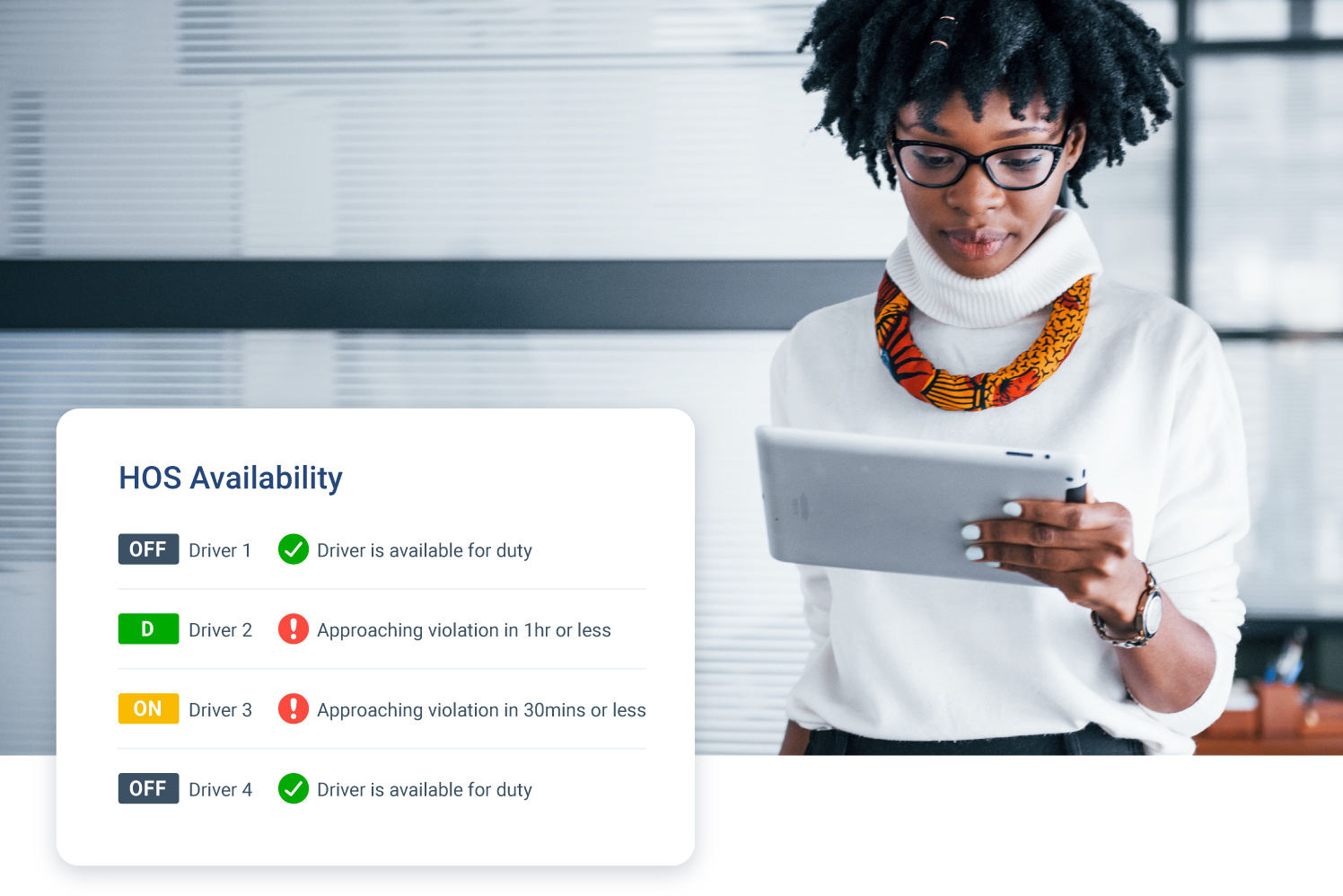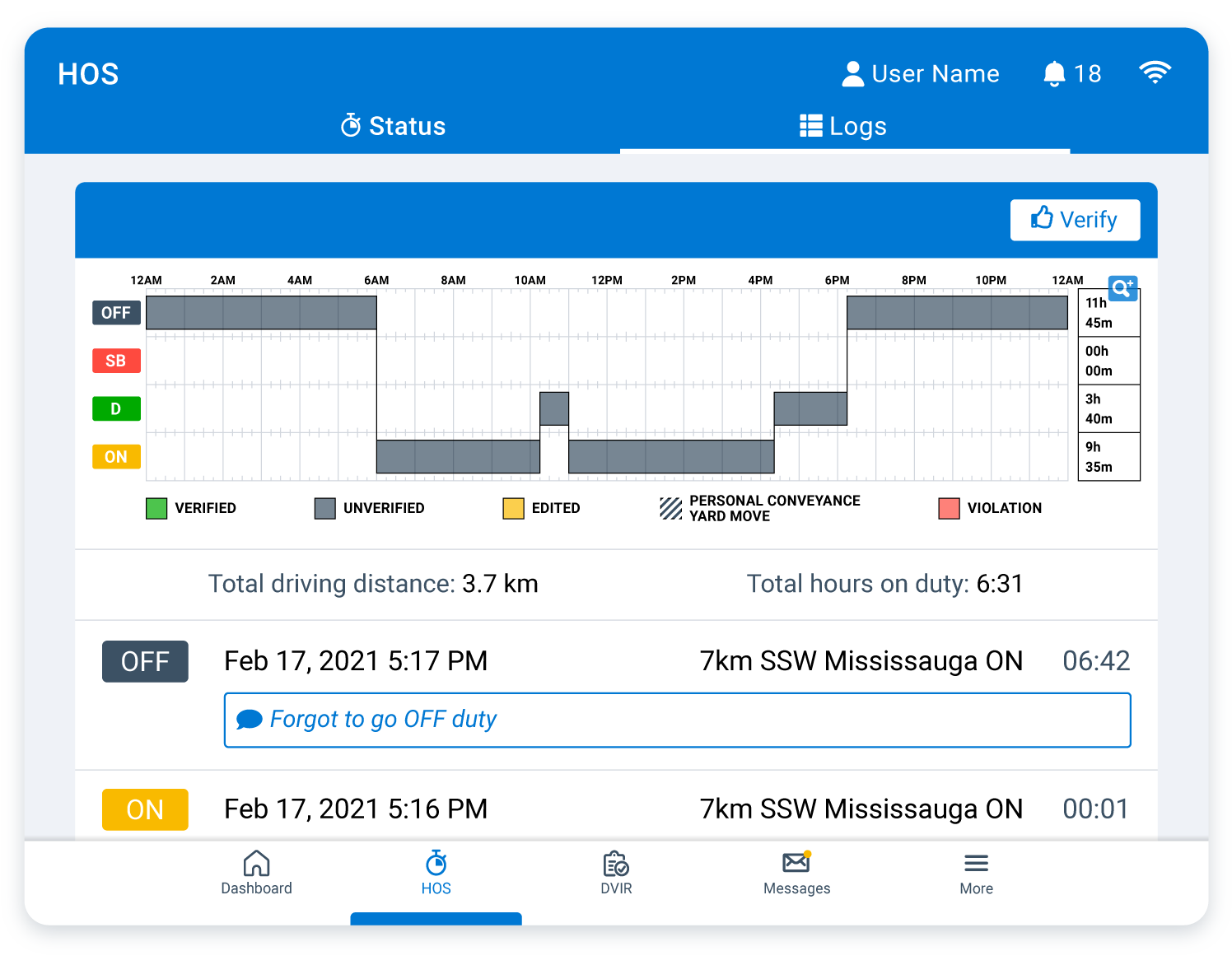Commercial Fleet Management: Strategies, Tools & Tips
Commercial fleet management plays a vital role in keeping businesses running smoothly, especially in industries like transportation, logistics, and...
Keep an eye on the road
Simplify your driver's routine
For efficient decision making
Ensure the compliance of your fleet
Simplify the daily life of your drivers
Maximize the value of your data
Unparalleled monitoring of your assets
The friendly competition that pays off
Planning powered by data
Exceed your customers' expectations
Provide better service to your users
Maximize the satisfaction of your citizens
Simplify your daily life on the construction site
Facilitate the electrification of your fleet
Our experts meet your needs
Easily meet the standards
Improve the safety of your drivers
Protect your data and your fleet
6 min read
Miguel Lage
Aug 13, 2024 10:26:49 AM

When managing a fleet in Canada, staying compliant with regulations while keeping operations efficient is no small task. The right Electronic Logging Device (ELD) is crucial—not just for ticking the compliance box, but for genuinely enhancing your fleet’s safety and performance.
This guide cuts through the noise to help you choose an ELD that fits your needs, meets Transport Canada’s requirements, and adds real value to your business.
Let’s dive into how you can make the best choice for your fleet!
Think of an ELD as your fleet’s digital co-pilot. It’s a piece of technology that automatically logs your drivers’ hours of service (HOS) and keeps track of things like whether the engine’s running, if the vehicle’s moving, and how far it’s gone. By connecting directly to the engine, an ELD takes the guesswork out of logbooks and helps ensure your drivers stay within legal driving limits—no more scribbling down hours and hoping they’re right.
In Canada, Transport Canada mandates the use of ELDs to keep our roads safe. The goal is simple: reduce driver fatigue, which is a major cause of accidents. By making sure drivers take the breaks they need and don’t push themselves too hard, ELDs help prevent those late-night, white-knuckle drives that can end in disaster. Plus, the regulations help level the playing field, so everyone’s following the same rules and competing fairly.

But ELDs aren’t just about compliance—they’re a game-changer for fleet management too. With an ELD, you get real-time data on everything from vehicle usage to driver behaviour. This means you can optimize routes, improve vehicle maintenance schedules, and cut down on fuel costs. It also means less paperwork and fewer headaches for you, freeing up your time to focus on growing your business.
Let’s face it: compliance isn’t optional. If your fleet isn’t following Transport Canada’s ELD regulations, you’re risking hefty fines, vehicle detentions, and even the suspension of your operations. But beyond the legal risks, staying compliant is about keeping your drivers—and everyone else on the road—safe. It’s about doing business the right way, which helps build trust with your clients and the public.
What exactly does Transport Canada require from an ELD? First off, it needs to automatically log driving time and be tamper-resistant—no sneaky adjustments allowed. It also needs to be capable of transferring data electronically during roadside inspections. And of course, it has to provide clear and accessible logs that both drivers and inspectors can review on the spot. Meeting these requirements ensures that your fleet is running by the book.
Not all ELDs out there make the cut, so it’s crucial to verify that any device you’re considering is certified by Transport Canada, like Geotab's solutions offered by AttriX. Luckily, they maintain a list of certified ELDs that meet all their standards. Always double-check any claims a vendor makes about certification against this official list. This way, you won’t end up with a device that can’t keep you compliant.
To be absolutely sure your ELD is compliant, stick with reputable vendors like AttriX who can provide clear documentation of their device’s certification. Look for transparency and solid customer support. Also, make sure to keep your ELD software up to date with any regulatory changes, and regularly audit your fleet’s compliance to catch any potential issues before they turn into problems.
Let’s be honest—if an ELD is too complicated to use, it’s going to cause more problems than it solves. Drivers have enough on their plates without having to struggle with a finicky device. A user-friendly ELD is essential because it reduces training time, minimizes errors, and lets drivers focus on what they do best: driving safely and efficiently.
So, what makes an ELD user-friendly? Look for a device with a responsive touchscreen and intuitive navigation. The layout should be straightforward, with clear icons and prompts that guide the user through logging hours or reviewing data. Voice commands are a big plus—they allow drivers to interact with the device without taking their eyes off the road. And real-time feedback, like alerts for potential HOS violations, can help keep drivers on track without the stress.
Even the best ELD won’t be effective if your drivers don’t know how to use it. That’s why proper training, like AttriX's, is key. Keep it simple but comprehensive—cover the basics of operation, common issues, and troubleshooting. Many ELD vendors offer helpful resources like video tutorials, manuals, and customer support to make training easier. Consider setting up hands-on training sessions where drivers can get comfortable with the device before hitting the road. And don’t forget to offer refreshers whenever there’s a new update or feature.
A simplified interface isn’t just a nice-to-have—it’s essential for reducing errors. The best ELDs automate as much as possible, like automatically switching between driving and on-duty statuses. This cuts down on the number of manual inputs required and reduces the risk of mistakes that could lead to fines or violations. Real-time alerts also help drivers correct issues before they become a big problem, making for a smoother, less stressful driving experience.
Nowadays, having an ELD that can integrate with your other systems isn’t just a bonus—it’s a necessity. Integration allows your ELD to work seamlessly with your fleet management software, telematics systems, dispatch tools, and maintenance platforms. This means all your data is in one place, making it easier to manage your fleet, improve efficiency, and ultimately, save money.
Your ELD should easily connect with the systems that are central to your operations. This includes telematics for GPS tracking and vehicle monitoring, dispatch software for optimizing routes and schedules, and maintenance management systems for tracking vehicle health. The more your ELD can integrate, the more value it provides by simplifying your operations.
When your ELD integrates with other systems, you get a streamlined flow of data that can significantly boost your fleet’s efficiency. For instance, integrating your ELD with your dispatch software allows you to optimize routes in real-time, cutting down on fuel consumption and improving delivery times. Similarly, linking it with maintenance systems ensures that vehicle diagnostics data goes straight to your maintenance team, helping prevent breakdowns and costly repairs. These efficiencies can add up to significant cost savings over time.
To make the best decision, create a checklist of what you need in an ELD. This should include essentials like compliance with Transport Canada regulations, ease of use, integration capabilities, extra features, reliability, customer support, and total cost of ownership. Use this checklist to evaluate different ELDs and narrow down your options to the one that best fits your fleet’s needs. Don’t forget to involve key stakeholders—like drivers, fleet managers, and IT staff—in the process. Their input can provide valuable insights and ensure the chosen ELD works for everyone.
AttriX offers comprehensive solutions to help Canadian fleet managers maintain compliance with Transport Canada’s ELD regulations. Powered by Geotab, AttriX’s Electronic Logbook ensures fleets are compliant with hours of service (HOS), vehicle inspection reports, and driver identification requirements. The platform provides real-time compliance alerts, reducing the risk of costly fines and improving driver safety. Additionally, AttriX offers tailored training and support to help fleet managers and drivers master the ELD system, ensuring seamless integration and optimal use of the technology.
AttriX also enhances operational efficiency through features like integrated GPS tracking, driver behaviour analysis, and vehicle diagnostics. These tools help fleet managers optimize routes, reduce fuel consumption, and ensure timely vehicle maintenance, ultimately contributing to a more efficient and compliant fleet.

Choosing the Best Electronic Logging Device isn’t just about ticking off a compliance box—it’s about finding a system that truly supports your fleet. Consider usability, integration capabilities, extra features, and long-term costs when making your decision. A reliable ELD provider with strong customer support is key to ensuring smooth operations and compliance. By taking a comprehensive approach, you can find an ELD that not only keeps you compliant but also helps you run a more efficient and profitable fleet.
An ELD's primary function is to automatically record a driver’s hours of service (HOS) to ensure compliance with Transport Canada regulations and promote road safety.
You can verify compliance by checking the device against Transport Canada’s list of certified ELDs, which includes devices that meet all regulatory requirements.
Look for features such as GPS tracking, vehicle diagnostics, fuel monitoring, and driver behaviour analysis to enhance fleet efficiency and safety.
Customer support is crucial; reliable and responsive support ensures that any issues with the ELD can be quickly resolved, minimizing downtime and maintaining compliance.
Costs can include the initial purchase price, installation, training, maintenance, and ongoing subscription fees. Consider the total cost of ownership and potential long-term savings when evaluating ELDs.

Commercial fleet management plays a vital role in keeping businesses running smoothly, especially in industries like transportation, logistics, and...

In fleet management, fleet compliance services play a much bigger role than just checking a box. They’re about keeping your drivers safe, your...

Trucking has always come with its fair share of challenges, from road safety and liability issues to managing fleet efficiency. As the industry...